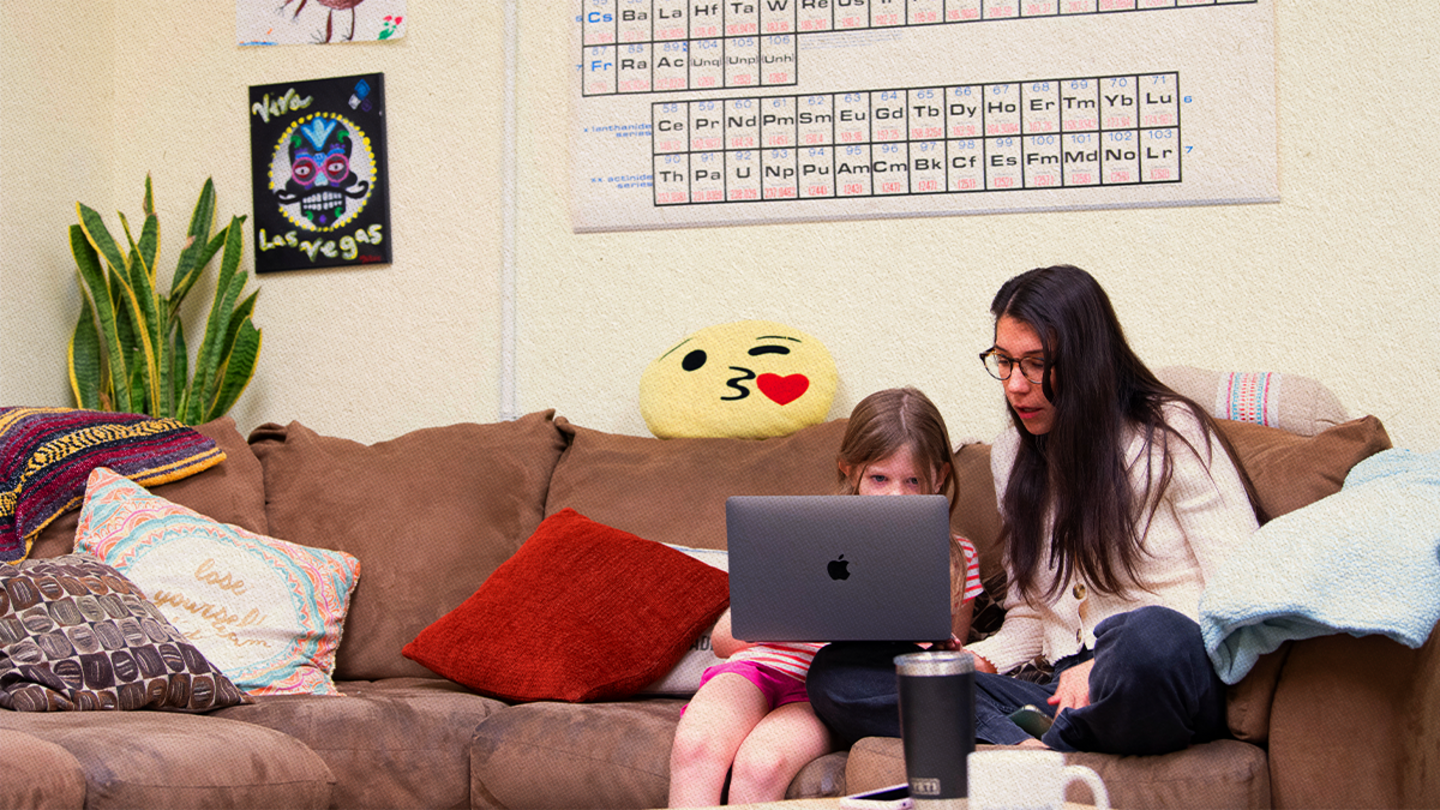Imagine if 2 out of 5 employees missed two days of work every month — such absenteeism would cause major disruption in most organizations.
Roughly four years ago, that was the reality among the 540 students at Northwest Middle School in Salt Lake City, Utah, where approximately 42% were chronically absent — defined as missing at least 10% of school days.
Chronic absenteeism became widespread during the pandemic. While Northwest’s absentee rate was an extreme case, the national average nearly doubled, rising from 15% in 2018 to 28% in 2021.
In the years since the pandemic, that national average has hardly budged.
Everyone from school leaders to lawmakers and journalists are taking notice. ProPublica has even called it “America’s Hidden Education Crisis.” But is it a “crisis”?
Here’s how some states are responding: In Hawaii, the legislature introduced a bill to address transportation concerns and pay bus drivers more to get kids to class, while Colorado is trying out a dental screening program to spot issues that could keep students home. Some states are putting pressure on parents by tightening truancy enforcement, while others are upgrading their reporting structures and trying to use data to identify absenteeism patterns early.
The question is: Will these legislative actions truly solve the problem?
Are cavities, bus driver shortages, lax truancy enforcement, and aged reporting structures the real reasons students chronically miss class? Are these laws tackling the root causes or merely aimed at improving attendance statistics? And does it really help to get a student back in their seat if they’re unwilling and disengaged?
Northwest Middle School has slashed its chronic absenteeism by more than 70% — without declaring a crisis, passing new laws, or pressuring parents. The school’s average now sits at around 10%.
What do educators at this small Utah school understand that others are missing?
Knowing school is important isn’t the same as wanting to go
Researchers typically turn to parents and teachers to try to understand problems like this, but they’re not the ones missing school. EdChoice, an education policy think tank, recently started asking questions at the source — teens. Researchers asked American students ages 13-18 what’s really keeping them and their peers out of school. While the teens had many answers to that question, many of them pointed to the same culprit.
Apathy.
Nearly 70% of teens said school is “boring” to some extent — and more specifically, when asked why they think students are chronically absent, 43% said school was “stressful” or “pointless.”
“If kids are in an environment where they don’t feel like it’s meaningful or that they have a connection to what’s going on, they’re going to check out,” said Adam Peshek, a senior fellow at Stand Together Trust. “It might be that you have a teacher you like and respect — someone that you’re showing up for and you’re committed to working for. That’s going to be a different scenario than if you feel like you’re just a cog in a wheel.”
At Northwest Middle School, educators created that connection by using a house system inspired by the Ron Clark Academy to implement a sense of teamwork, belonging, and small-group accountability. This approach, which is common in the United Kingdom, fosters a sense of belonging that has been a strong part of individualizing education for at least five decades. It divides students, faculty, and staff into four houses, each with its own name, color, value, symbol, and heritage. Housemates are accountable to each other as they compete with other houses for rewards such as field trips and class parties.
Now, missing school isn’t just about missing a day of math and reading — it’s about potentially letting down your housemates. That kind of accountability does wonders for the spark that is missing when a student feels like a cog in the wheel.
The house system was a solution that worked for the students in that particular school.
“We need to think about this more from the individual perspective,” said Peshek. “Is the world better if we hire more truancy officers? That might solve the data problem, but it won’t solve the heart problem. This is an opportunity to rethink education in a way that allows educators to build unique communities that people (students and parents) want to opt into.”
Sign up for Stand Together's K-12 newsletter and get stories, ideas, and advice from changemakers who are transforming education across the country.
When ‘go to school’ sounds like ‘eat your broccoli’
Policy solutions for absenteeism tend to fall into two camps: One argues that students need more autonomy to shape their educational paths. The other leans on the “eat-your-broccoli approach,” emphasizing the need for more discipline and structure.
But here’s the problem: Voting to decide on the most popular fix won’t solve this. With 14.7 million students chronically absent, there’s no one-size-fits-all answer. Peshek argues the real solution lies in pluralism, with legislators giving educators the freedom and resources to create new, unique learning environments that work for families while also ensuring that all schools have the autonomy to focus on the needs of local families like Northwest Middle School did — without having to conform to a predetermined approach, as so often happens in education.
Giving autonomy to local communities and educators allows them to create the kind of schools kids want to attend, transforming the problem from one of numbers — how many students are in their seats? — to one of engagement — how do we engage our students better?
Legislatures often focus on the numbers — finding the solution that will fill the most seats. But when schools and educators address the issue, it becomes an opportunity to focus on the needs of individual students.
“The solution is not finding the thing that research says works for 60% of kids and then plowing all of our resources into that thing,” Peshek said. “We should give way more flexibility to schools to try things out, to build specific cultures and attract people.”
With more options, families could find schools that align with students’ interests, needs, and learning styles. When schools offer specialized programs — whether in STEM, the arts, classical education, project-based learning, or other areas — they create environments that engage students and make learning feel relevant and exciting. This sense of purpose and belonging can reduce apathy and help students internalize why they should show up.
Additionally, diverse school models allow educators to build stronger, more personalized connections with students and their families. Smaller or specialized schools often foster tighter-knit communities where students feel valued and missed when they’re not there. Empowering schools to innovate means they can adapt their approaches to address the unique challenges and barriers their students face.
“Within each one of those chronically absent kids, there’s probably a different story with a different solution and a different kind of why behind it,” said Peshek.
More options mean more opportunities for students to feel connected, inspired, and invested in their education, tackling absenteeism at its roots.
How options fuel curiosity and exploration
In Arizona, all public schools have open enrollment, which has created an open marketplace where schools compete to attract students. This environment pushes schools to be entrepreneurial and innovative, shaping their educational offerings and engaging creatively with parents and communities. Some districts even advertise on billboards, highlighting unique programs to attract students who would benefit from their strengths.
In Milwaukee, home to the nation’s longest-running open enrollment program, educators take a hands-on approach. They go door to door, engaging directly with parents to understand their priorities and share how their schools can meet their families’ needs.
Peshek compared one-size-fits-all traditional education models with what it must have been like to buy a car in Soviet Russia. “If you only had one car option, would you really think about what you wanted out of your car or whether you’d prefer a minivan versus an SUV?” he asked.
Having choices opens the door to curiosity and exploration, generating new possibilities. This freedom not only shapes a person’s education but also influences how they see themselves within the learning environment — and whether or not they want to be there.
“Choices allow parents to think, ‘What is it that I want for my kids?’” said Peshek. “And it allows students to think, ‘What do I want out of education? What’s going to motivate me? What are the different things that get me excited about going to school?”
***
EdChoice is supported by Stand Together Trust, which provides funding and strategic capabilities to innovators, scholars, and social entrepreneurs to develop new and better ways to tackle America’s biggest problems.
Learn more about Stand Together’s education efforts and explore ways you can partner with us.

Here’s what happens when AI replaces teachers.

Four suggestions for policymakers and education influencers wanting better choices for families.

Emily Niehaus didn’t expect to be a school founder. Now, she wants others to learn from her journey.

American childhood has changed. Here’s what we can do to bring back the magic.
